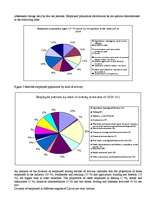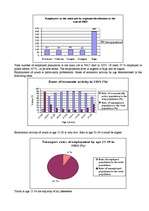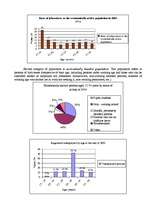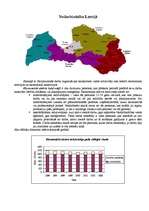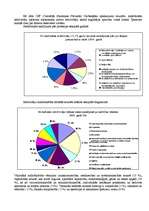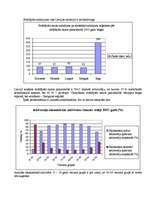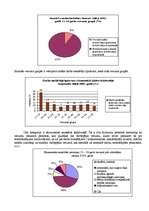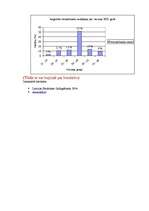-
Employment in Latvia/ Nodarbinātība Latvijā
According to the standards of the International Labour Organization, the population of a country is divided into economically active and economically inactive population. Economically active population refers to persons of both sex who in the reference period offered their work for production of goods and services. Economically active population consist of:
employed persons – refers to persons age 15-74 years, who do any work for cash payment or compensation in goods or service. Self employed persons with a business, farm or those who are undergoing professional practice are also considered as employed. The number of employed persons also includes those who work for own consumption and their work is an important source of livelihood for the person or the family.
non-working actively seeking a job (both those who are registered with the State Employment Agency and those who are not). Jobseekers are persons who don’t work and are not temporarily absent from work, are actively seeking a job and immediately available for work if they find it. The number of jobseekers also includes persons who did no seek a job because they had already found one and were available to start it within the next 3 month.
Saskaņā ar Starptautiskās darba organizācijas standartiem valsts iedzīvotāji tiek iedalīti ekonomiski aktīvajos un ekonomiski neaktīvajos.
Ekonomiski aktīvie iedzīvotāji ir abu dzimumu personas, kas pārskata periodā piedāvā savu darbu materiālo vērtību ražošanai vai pakalpojumu sniegšanai. Ekonomiski aktīvie iedzīvotāji sastāv no:
nodarbinātajiem iedzīvotājiem – visas tās personas 15-74 gadu vecumā, kas veic jebkuru darbu vai nu par samaksu naudā vai arī par atlīdzību precēs vai pakalpojumos. Par nodarbinātajiem uzskata arī pašnodarbinātās personas uzņēmējdarbībā, lauku saimniecībā vai profesionālajā praksē. Nodarbināto skaitā ietver arī tās personas, kas strādā, lai iegūtu produkciju pašu patēriņam, ja tas ir nozīmīgs iztikas avots personai vai tās ģimenei.
nestrādājošiem iedzīvotājiem, kuri aktīvi meklē darbu (gan reģistrētie Nodarbinātības valsts aģentūrā, gan nereģistrētie). Tātad darba meklētāji ir visas personas, kas nestrādā un nav pagaidu prombūtnē no darba, aktīvi meklē darbu un tā atrašanas gadījumā ir gatavi sākt strādāt. Darba meklētāju skaitā ietilpst arī tās personas, kuras darbu nemeklēja, jo darbu bija jau atradušas un uzsāks to trīs mēnešu laikā. …
Darbā ir apkopota statistika par nodarbinātīnu Latvijā
Angļu un latviešu valodā


